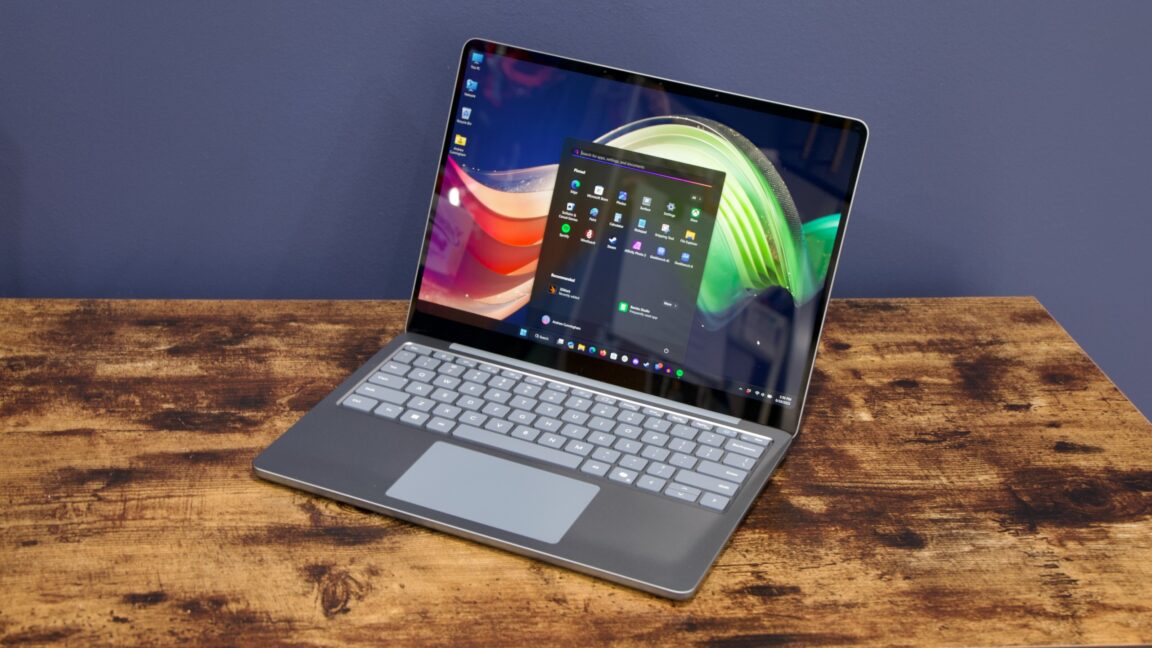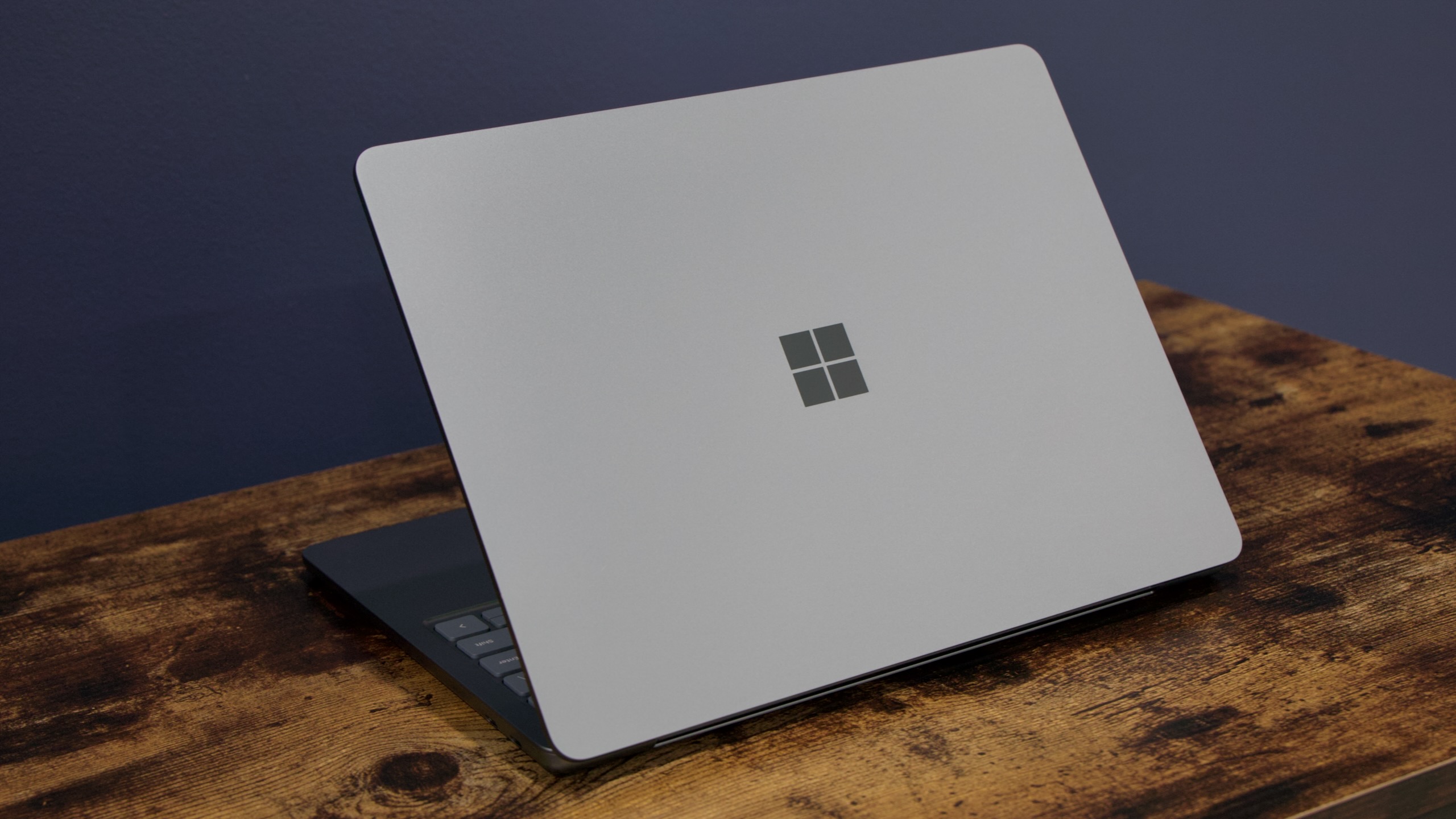
Credit: Andrew Cunningham
Microsoft's new 13-inch Surface Laptop is an odd one. It's inarguably a step down in every respect from last year's 13.8-inch Surface Laptop. But it's also too good (and too expensive) to be considered a replacement for the Surface Laptop Go, the company's perennially overpriced and underspecced entry-level laptop. It's cheaper than last year's Surfaces, but mostly because Microsoft gave those devices a de facto price hike by killing the entry-level configurations of those PCs.
We're left with a laptop that's perfectly fine or even great, depending on what you want. It's relatively affordable for what is, a sort of MacBook Air-ish, just-the-basics portable computer. But it's such a step down from the $999 laptop Microsoft released just last year that it's hard not to see the entire laptop as one big series of compromises.
Where does the 13-inch Surface Laptop belong?
Despite just calling it the "Surface Laptop, 13-inch," Microsoft clearly considers this to be an entirely different sub-class of laptop rather than a continuation of the flagship Surface Laptop or the lower-end Surface Go. The system identifies itself to Windows as "Surface Laptop 13in 1st Ed with Snapdragon," where the 13.8- and 15-inch Surface Laptops are both labeled as 7th edition devices.
| 13-inch Surface Laptop | Surface Laptop 7 (13.8-inch) | Surface Laptop Go 3 | |
|---|---|---|---|
| Processor | 8-core Snapdragon X Plus | 10-core Snapdragon X Plus or 12-core Snapdragon X Elite | Intel Core i5-1235U (2 P-cores, 8 E-cores) |
| RAM | 16GB LPDDR5x | 16, 32, or 64GB LPDDR5x | 8 or 16GB LPDDR5 |
| Storage | 256 or 512GB UFS | 256GB, 512GB, or 1TB NVMe | 256GB NVMe |
| Screen | 13-inch, 1920×1280, 60 Hz IPS | 13.8-inch, 2304×1536, 120 Hz IPS | 12.4-inch, 1536×1024, 60 Hz IPS |
| Size and weight | 11.25 x 8.43 x 0.61 inches, 2.7 lbs | 11.85 x 8.67 x 0.69 inches, 2.96 lbs | 10.95 x 8.12 x 0.62 inches, 2.49 lbs |
| Starting price | $899 | $999 | $799 (launch), $949 (now, for some reason) |
In measurements and specs, this new Surface Laptop falls right in between the 13.8-inch flagship and the aging Surface Go 3. The new laptop also borrows components and ideas from both the Surface Laptop 7 and the Surface Go design. But in the end, this feels like a refreshed, Arm-powered iteration of the Surface Laptop Go rather than a more compact version of the flagship Surface design.
Internally, the 13-inch Surface Laptop is a scaled-back version of the flagship laptops Microsoft launched a year ago. Its 8-core Snapdragon X Plus processor uses the same architecture as the larger laptops, just with fewer cores. To meet Microsoft's Copilot+ requirements, it has the same neural processing unit (NPU) as the bigger Surface devices, as well as 16GB of RAM and 256GB or 512GB of storage. Aside from storage and the color of the device, there are no upgrade options or choices to make. But unlike with the Surface Go, this does mean that the entry-level model is adequately specced and will feel plenty fast for most things.
The external design pulls more extensively from the Laptop Go, a laptop that was originally designed to start at $550. The 13-inch Laptop does make some welcome upgrades—a backlit keyboard, a somewhat larger and higher-resolution display panel—but its aluminum body feels slightly softer and flimsier than what the main Surface Laptop uses. Its glass-covered touchscreen doesn't have any kind of anti-reflective coating, something it shares with the bigger Laptops, and it uses a fingerprint reader for Windows Hello rather than a face-scanning camera. It has two USB-C ports for accessories and for charging, but they top out at 10 Gbps speeds rather than 40 Gbps USB4 speeds, and it's missing the Surface Connect port (it does have USB-A and a headphone jack, though).
Display quality is good, at least. With a peak brightness of 401 nits, a 1,817:1 contrast ratio, and 95 percent SRGB color gamut coverage, it's not a premium laptop display (there's no OLED or mini LED here, only 68 percent DCI-P3 gamut coverage, and there's no refresh rate above 60 Hz). But it does tick the boxes for what we look for in a better-than-baseline laptop display in a way that (say) the Framework Laptop 12 doesn't do.
The laptop's glass-coated touchscreen screen and aluminum exterior look and feel reasonably upscale, but it's still a step down in rigidity and build quality from last year's Surface Laptops or the MacBook Air. The fit and finish isn't as tight, and the aluminum feels thinner and flimsier. When I open it, I am consistently greeted with a small creaking or popping noise. I'm not worried about anything breaking; it's just missing the brick-like solidity of Microsoft's other designs.
If I have one functional issue with the design, it's that it's so symmetrical from the top with the lid closed that I frequently found myself trying to open it from the hinge side. There are obviously ways to tell the difference, but the square-of-squares Microsoft logo and the nearly non-tapered design both make it harder to tell at a glance.
Repairs and upgrades
Microsoft has made a fair amount of noise in recent years about its support for more repairable devices, and it has made real progress on this front. Teardown artists at iFixit called 2017's Surface Laptop a "glue-filled monstrosity." But this year's Surface Laptops rated an 8 out of 10 on the repairability scale, Microsoft publishes first-party repair manuals for all of its hardware, and the company had shifted to using replaceable M.2 SSDs across the lineup.
Microsoft hasn't published the service manual for either of these newest Surfaces yet, but the new Laptop largely comes apart like recent Surface Laptop Go designs—remove the four adhesive-less rubber feet from the bottom, unscrew the Torx screws underneath each, and carefully use a plastic spudger to separate the keyboard from the bottom case so it can lift away. This is your first step toward most major repairs, including battery or motherboard replacements.
But the Framework Laptop this ain't. There's only one component that can really be considered user-replaceable, and it's the SSD. The CPU, RAM, and other components are all soldered to the motherboard. The 12-inch Surface Pro tablet has seemingly reverted to soldered-down storage, with a UFS-based SSD instead of a typical NVMe drive, but it's nice to see Microsoft preserve user-replaceable storage here.
As in many other Surface devices, these are of the shorter M.2 2230 variety rather than the 80 mm-long M.2 2280 drives you'd find in larger laptops or in most desktop PCs. But this has become a more commonly used size than it was a few years ago—the Surfaces, the Steam Deck, the upcoming Framework Laptop 12, and a smattering of other thin-and-light laptops all use it now—so it's possible to find a third-party replacement drive. Microsoft has occasionally issued vague warnings about using third-party SSDs, but in my limited experience trying different drives in these Arm-based Surface devices, swapping out NVMe drives has worked pretty much like it does in any other PC.
Performance and battery
There's only one processor option in the 13-inch Surface Laptop: a Qualcomm Snapdragon X Plus chip (the exact model is X1P-42-100).
This is somewhat lesser than the Snapdragon X Plus processors used in last year's Surfaces and others in the first wave of Copilot+ PCs. It has eight CPU cores based on Qualcomm's Oryon architecture, with a maximum boost speed of 3.4 GHz. That's two fewer cores than the 13.8-inch Surface Laptop and four fewer than the Snapdragon X Elite. The integrated GPU is also cut down from 3.8 TFLOPS of performance in the pricier Surfaces to 1.7 TFLOPS here. In the benchmarks we ran, the 13-inch Laptop usually had around or just over half the graphics performance of the larger versions with the better GPUs in them.
That means this isn't a gaming laptop—performance is in roughly the same ballpark as Intel's years-old Iris Xe integrated GPU and far short of the newer integrated Intel Arc GPUs, AMD's integrated Radeon 780M and 890M, and likely most of the lower-end Ryzen GPUs, too. Arm PCs are already a bit iffy on the gaming front because of app-translation overhead and compatibility issues, and if the faster Adreno GPUs sometimes have enough raw performance to muscle through, the 13-inch Surface Laptop's GPU will have a harder time.
General performance feels fine because the processor still has plenty of cores, and you don't need a lot of graphical oomph for desktop rendering (the laptop also handled an external display without struggling). Battery life also feels pretty excellent; the PCMark Modern Office battery test doesn't run on the Arm version of Windows, so we have to go with vibes and anecdotal data rather than hard numbers. But like the Surface Pro and Surface Laptop from last year, I'd say battery life feels a sight better than most Intel and AMD-based PCs I've used lately, while not being quite as stratospheric as the MacBook Air. Expect to charge it most nights, but you usually shouldn't need to worry about topping up in the middle of the day.
A quick note on Windows-on-Arm
The new Surfaces are Microsoft's second wave of Arm-first consumer PCs, following several years of Arm devices that were sold as side projects or sub-variants of more traditional Intel and AMD systems. We've been covering the Arm versions of Windows since their inception, but particularly over the last couple of years, as a combination of effort from Microsoft and updates to third-party apps began making Arm PCs feel less like "Arm PCs" and more like just... PCs.
Progress since last summer has been mostly incremental, with the release of a few more one-off apps (the Google Drive app went Arm-native in November, Adobe supports more of its apps via emulation) and hardware drivers (Microsoft claims progress is being made on supporting external audio interfaces). For developers, devoting time to Windows on Arm will require a certain amount of user demand, and Arm systems are still just a fraction of a fraction of the Windows user base—the situation is a lot better than it's ever been, but drivers and niche apps with specific compatibility or performance problems will still take time to sort out.
If you play games or use exotic external hardware that requires specialized drivers, I'd still err on the side of grabbing an Intel or AMD laptop, particularly because this basic Snapdragon X Plus chip gives up more graphics performance than it does CPU performance. But for browsing, image editing, and the vast majority of office and productivity work, it's still kind of remarkable how much "using an Arm PC" just feels like "using a PC," compared to where things were just a few short years ago.
This is fine

The 13-inch Surface Laptop.
Credit: Andrew Cunningham
The $900 13-inch Surface Laptop isn't bad. As Microsoft's answer to the MacBook Air, it's actually pretty good if you don't trip over some lingering software compatibility issue with the Arm version of Windows. General performance is good; battery life is good; and I have no quibbles with the touchscreen, keyboard, or trackpad, three major components that fade into the background when done well but which can easily ruin a laptop if done poorly.
But it's a step down from the 13.8-inch Surface Laptop in a whole bunch of ways, a laptop that Microsoft was selling for just $100 more than this until very recently. The screen is smaller and has a lower resolution, and it only refreshes at 60 Hz instead of 120 Hz. The build quality, while decent, feels a shade or two flimsier and more dentable. Integrated graphics performance takes a significant hit, though it retains the NPU necessary for Copilot+ PC features. Its base specs are fine for everyday use, but Microsoft offers few upgrade options, opting instead to upsell you to the now-$1,100 13.8-inch Laptop.
It's hard to know what price point Microsoft was targeting with this thing when it was in the drawing-board phase, but its broad similarity to the old Surface Laptop Go design suggests it was intended as more of a budget model. In the end, Microsoft positioned it as an entry-level flagship device—and gave it an entry-level flagship price to match.
It's hard not to see the 13-inch Surface Laptop as a poster child for our modern era of trade wars and economic uncertainty, factors that are driving up prices of everything from keyboards to game consoles. Cheap laptops still exist, but it feels like it's become that much harder to find something that's a step up from bargain-basement chunky plastic while still costing significantly less than $1,000.
Microsoft's laptops regularly go on sale, both on Microsoft's own store and at third-party retailers like Best Buy. If you can find it in the $700 to $800 range, it's a solid deal. But at the regular retail price, it just feels like an inferior remix of a year-old laptop.
The good
- Ticks all of the most important laptop boxes for $100 less than a MacBook Air
- Solid CPU performance, 16GB of RAM, a nice-looking touchscreen, and a reliable keyboard and trackpad
- Minimalist port selection that should still cover most of the basics
- Most of the time, running Windows on Arm just feels like running Windows
The bad
- Outstanding Windows-on-Arm compatibility issues with some external accessories, niche apps, and games
- Somewhat flimsier build than laptops like the Surface Laptop 7 or MacBook Air
- Lackluster graphics performance
The ugly
- A year ago, you could buy a significantly better version of this laptop for just $100 more

-
 C114 Communication Network
C114 Communication Network -
 Communication Home
Communication Home


